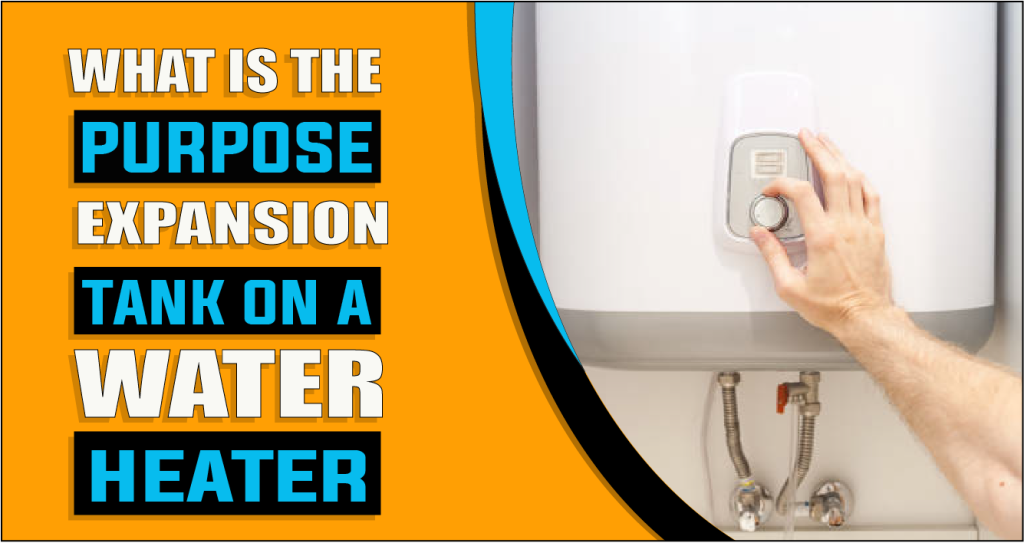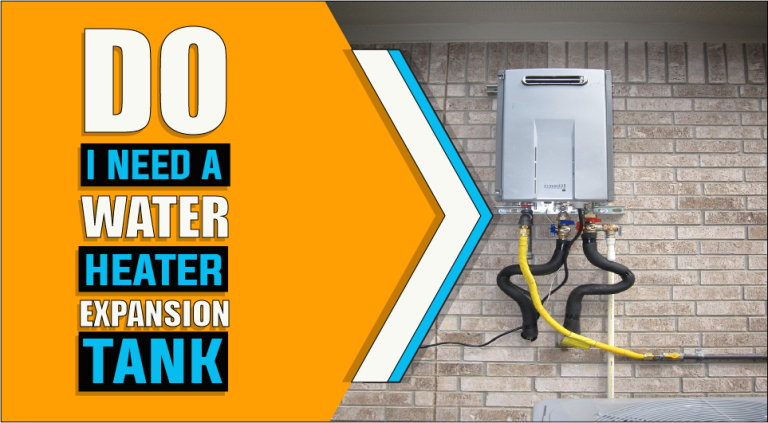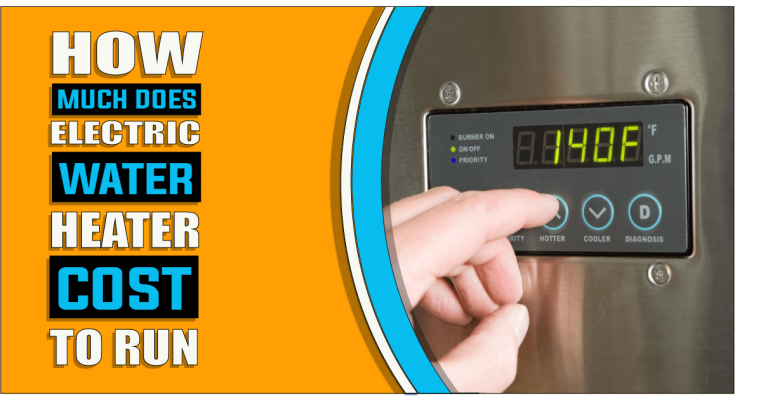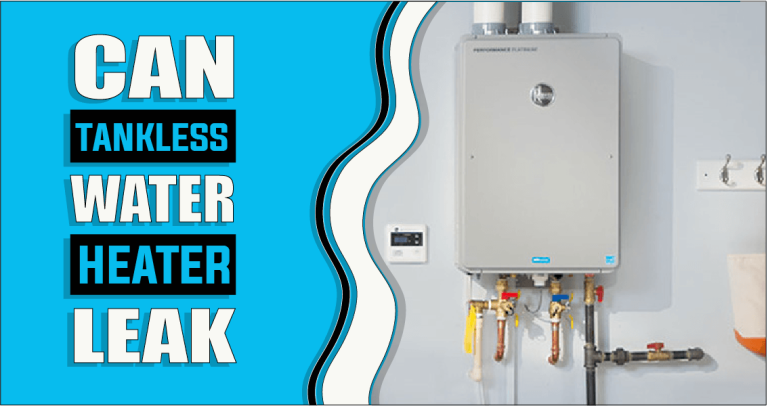What Is the Purpose of An Expansion Tank on A Water Heater | Understanding the Role
Water heaters are unsung heroes in our homes, silently providing the warmth and comfort we often take for granted. These humble appliances ensure hot showers, clean dishes, and cozy indoor spaces year-round. Yet, behind their simplicity lies a complex system designed for efficiency and safety. This article highlights a vital yet often overlooked component of your water heating system: the expansion tank. We’ll examine what it is, why it’s crucial, and how it keeps your water heater running smoothly. Whether you’re a homeowner seeking a deeper understanding of your water heating system or simply curious about the inner workings of this essential household appliance, you must discover the purpose of an expansion tank in a water heater. Without any delay, let’s look at the purpose of an expansion tank on a water heater!

Why Is an Expansion Tank Necessary — Main Purposes
An expansion tank, often an inconspicuous part of a water heating system, serves several crucial purposes that contribute to your water heater’s efficient and safe operation. Below are the top purposes of an expansion tank:
1: Mitigating Thermal Expansion –
One of the primary roles of an expansion tank is to address the issue of thermal expansion. When your water heater heats water, it causes the water molecules to expand. In a closed plumbing system (where there’s no relief valve or open faucet), this can lead to a significant increase in pressure within the system. Without an expansion tank, this increased pressure can stress your water heater, plumbing pipes, and fixtures excessively.
2: Preventing Pressure Build-Up –
As the water heats up, it expands, and without an outlet for this expansion, the pressure within the system can become dangerously high. This can lead to problems like leaking pipes, damaged water heater components, or even ruptured water heaters. The expansion tank acts as a pressure relief valve, absorbing the expanded water volume and preventing a surge in pressure.
3: Prolonging Water Heater Lifespan –
By maintaining a stable and safe pressure level within the water heating system, the expansion tank helps extend the lifespan of your water heater. The consistent pressure reduces the wear and tear on the water heater’s internal components, including the heating element or burner, thermostat, and tank. This can save you money by avoiding premature water heater replacements.
4: Enhancing Energy Efficiency –
Water heaters with expansion tanks tend to be more energy-efficient. When pressure builds up in a system without an expansion tank, it can trigger the temperature and pressure relief valve to release hot water periodically, wasting energy. With an expansion tank, the system remains pressurized, minimizing the need for these energy-wasting releases.
5: Reducing Water Waste –
Without an expansion tank, excess pressure caused by thermal expansion often results in small amounts of hot water discharge through the temperature and pressure relief valve. This not only wastes energy but also water. Expansion tanks help curtail these wasteful discharges, making your water heating system more environmentally friendly.
6: Preventing Noisy Water Hammer –
Thermal expansion can also lead to a phenomenon known as water hammer, where loud and abrupt banging noises occur in the plumbing system when a faucet is turned off quickly. Expansion tanks absorb the shock caused by water hammer, minimizing noise and reducing the strain on pipes and fixtures.
7: Ensuring Consistent Hot Water Delivery –
By maintaining stable pressure levels, expansion tanks contribute to a consistent and steady flow of hot water to your taps and fixtures. This means you can enjoy uninterrupted hot showers and smooth operation of other hot water appliances without water pressure or temperature fluctuations.
How does an expansion tank work?
Expansion tanks are essential for water heating systems, especially closed-loop plumbing systems. Their primary function is to address the issue of thermal expansion, a phenomenon that occurs when water is heated, causing it to expand.
Understanding how an expansion tank works is vital to appreciating its role in maintaining the efficiency and safety of your water heater. The expansion tank operates quietly but efficiently, acting as a crucial guardian against the challenges of thermal expansion within your water heating system.
Its unassuming presence ensures your system’s continued efficiency, safeguards against potential damage, and guarantees a dependable hot water supply.
While often overlooked, the expansion tank plays an indispensable role in prolonging the life and reliability of your water heater, quietly supporting the comfort and convenience of your daily life.
Expansion Tank Regulations and Codes
Expansion tanks are integral not only for the efficient operation of water heating systems but also are subject to regulations and codes to ensure proper installation and safety. Understanding these regulations is crucial, as non-compliance can lead to performance issues, safety hazards, and even legal implications. Here’s comprehensive information on expansion tank regulations and codes:
1: Local Building Codes –
Expansion tank requirements may vary by location due to local building codes. These codes often stipulate the necessity of expansion tanks, their placement, and sizing based on factors like water pressure, system size, and the type of water heater.
2: Plumbing Codes –
National and local plumbing codes can also influence expansion tank installations. Plumbing codes cover aspects like proper piping, isolation valves, and the prevention of backflow or cross-contamination.
3: ASME (American Society of Mechanical Engineers) Standards –
Expansion tanks must adhere to ASME standards, particularly ASME Section VIII, which governs the construction and testing of pressure vessels. ASME-certified expansion tanks are designed to meet strict quality and safety criteria.
4: Sizing Guidelines –
Codes and standards often guide correctly sizing expansion tanks based on factors such as the water heater’s capacity, pressure, and thermal expansion volume. Ensuring the right size is crucial for their effectiveness.
5: Pressure Relief Valves –
Regulations frequently require the installation of pressure relief valves alongside expansion tanks. These valves are designed to release excess pressure in the event of a malfunction, preventing catastrophic failures.
6: Location Requirements –
Regulations may specify the allowable locations for expansion tanks, ensuring they are correctly positioned within the water heating system. This includes considerations for accessibility and safety.
7: Permits and Inspections –
A building permit may be required to install expansion tanks in many areas. Moreover, inspections by local authorities or plumbing inspectors may be necessary to ensure compliance with codes and standards.
8: Professional Installation –
Many codes emphasize the importance of installing expansion tanks by qualified professionals familiar with local regulations. DIY installation may not meet code requirements.
9: Compliance Documentation –
Building codes often require documentation of compliance with expansion tank regulations. This may include record-keeping of installation details, sizing calculations, and pressure settings.
10: Retrofitting and Existing Installations –
Regulations may specify requirements for retrofitting expansion tanks into existing water heating systems initially installed without them. Compliance with these requirements is essential for safety and performance.
11: Variations in Codes –
It’s important to note that expansion tank regulations and codes can vary by location and over time as codes are updated and revised. Staying informed about the latest code requirements is essential for compliance.
Installation and Maintenance of Expansion Tanks
Proper installation and regular maintenance of expansion tanks are essential to ensure they function effectively and extend the life of your water heating system.
1: Installation of Expansion Tanks –
- Positioning: Choose an appropriate location for your expansion tank. It’s typically installed on the cold-water supply line near the water heater. Ensure it’s mounted in a vertical position.
- Isolation Valve: Install an isolation valve on the inlet side of the expansion tank. This valve allows you to isolate the tank for maintenance without shutting off the water supply to your entire home.
- Pressure Setting: Adjust the air pressure in the expansion tank to match your water heater’s operating pressure. This is usually around 40-60 psi (pounds per square inch). Use a tire pressure gauge to check and adjust the pressure as needed.
- Secure Mounting: Mount the expansion tank to a wall or support structure. Ensure it’s firmly anchored to prevent any movement or vibration.
- Connection: Connect the expansion tank to the cold-water supply line. Ensure all connections are tight and free from leaks.
- Air Cushion: The expansion tank contains an air cushion separated from the water by a rubber diaphragm. During installation, make sure this diaphragm is intact and functioning correctly.
- Air Vent: Some expansion tanks may have an air vent or a Schrader valve for adjusting the air cushion. If your tank has one, ensure it’s accessible and functioning properly.
2: Maintenance of Expansion Tanks –
- Pressure Check: Regularly check the air pressure in the expansion tank at least once a year or as the manufacturer recommends. Use a tire pressure gauge to ensure it matches the water heater’s operating pressure. If the pressure is too low, use a bicycle pump to add air.
- Visual Inspection: Inspect the expansion tank for any signs of corrosion, rust, or damage. If you notice any issues, it may be time for a replacement.
- Isolation Valve Test: Occasionally, test the isolation valve on the inlet side of the expansion tank to ensure it functions correctly. Turning this valve off and on allows you to isolate the tank for maintenance without affecting your water supply.
- Air Vent Check: If your expansion tank has an air vent or Schrader valve, check it for proper operation. This helps maintain the integrity of the air cushion inside the tank.
- Leak Inspection: Look for leaks around the expansion tank, connections, or valves. Address any leaks promptly to prevent damage to your water heater and plumbing.
- Replacement: Expansion tanks have a limited lifespan, typically around 5-10 years. If your expansion tank is older or shows signs of wear and tear, consider replacing it to maintain the efficiency and safety of your water heating system.
- Professional Maintenance: Consult a professional plumber or technician for complex issues or if you are unsure about maintenance tasks. They can inspect and service your expansion tank as part of routine water heater maintenance.
By following these installation and maintenance guidelines, you can ensure that your expansion tank continues to perform its vital role in safeguarding your water heating system, reducing energy waste, and prolonging the life of your water heater. Regular checks and timely maintenance can help you avoid costly repairs and disruptions to your hot water supply.
Conclusion:
Now, we hope you have the answer to the question of the purpose of an expansion tank on a water heater. In conclusion, an expansion tank on a water heater aims to mitigate the effects of thermal expansion, which occurs when water heats up and expands in volume. Without an expansion tank, the increased pressure caused by this expansion can lead to various issues, including damage to plumbing systems, leaks, and even burst pipes. Moreover, an expansion tank helps to conserve energy by reducing the frequency of relief valve discharge and minimizing water waste. It also plays a crucial role in maintaining optimal water pressure and flow throughout the plumbing system, enhancing efficiency. Its role may be understated, but its impact on the performance and longevity of your water heater is anything but minor.
Relevant Questions
While it is possible to install a water heater without an expansion tank, it is not recommended. Without an expansion tank, the increased pressure caused by thermal expansion can lead to costly damage to the plumbing system. Additionally, local building codes may require the installation of an expansion tank, especially in areas with high water pressure. It is best to check with local regulations and consult a professional plumber to determine the specific requirements for your water heating system.
Not all water heaters require an expansion tank. The necessity of an expansion tank depends on several factors, including the type of water heater, the water pressure in your area, and the local building codes. Tankless water heaters, for example, typically do not require an expansion tank because they heat water on demand and eliminate the need to store hot water. However, in areas with high water pressure, installing an expansion tank may still be recommended to ensure the plumbing system’s safe and efficient operation.
While experienced individuals can install an expansion tank themselves, it is generally recommended to hire a professional plumber. Proper installation requires knowledge of plumbing systems, correct positioning of the expansion tank, and appropriate connection to the water heater. Additionally, an experienced plumber can assess the specific requirements of your water heating system, determine the correct size and type of expansion tank needed, and ensure compliance with local building codes. Hiring a professional plumber ensures the installation is done correctly, minimizing the risk of future issues or damage.
Choosing the right size expansion tank for your water heater is crucial for efficient operation. The size of the expansion tank depends on factors such as the water heater’s capacity, the water pressure in your area, and the volume of heated water. It is recommended to consult a professional plumber who can calculate the required size based on these factors. A general rule of thumb is to select an expansion tank with approximately 10% of the water heater’s capacity. However, for precise sizing, it is best to rely on the expertise of a professional plumber.
Ella John is passionate about helping her readers make the best choice when purchasing a heater. She understands that selecting a heater can be difficult and strives to provide information to help make the decision easier. Ella’s website, Heatersinfo.com, provides valuable insight into heating trends and types of heaters and tips on how to care for them. She also advises selecting the right heater based on individual needs and preferences. Her expertise in electronics makes her an excellent source of knowledge, and she is confident that anyone who visits her website will find the perfect heater information for their needs. Ella’s dedication to helping others make educated decisions about buying the right heater is unparalleled, and she hopes to continue offering her expertise for many years. With Ella’s help, finding the perfect heater can be a breeze!





